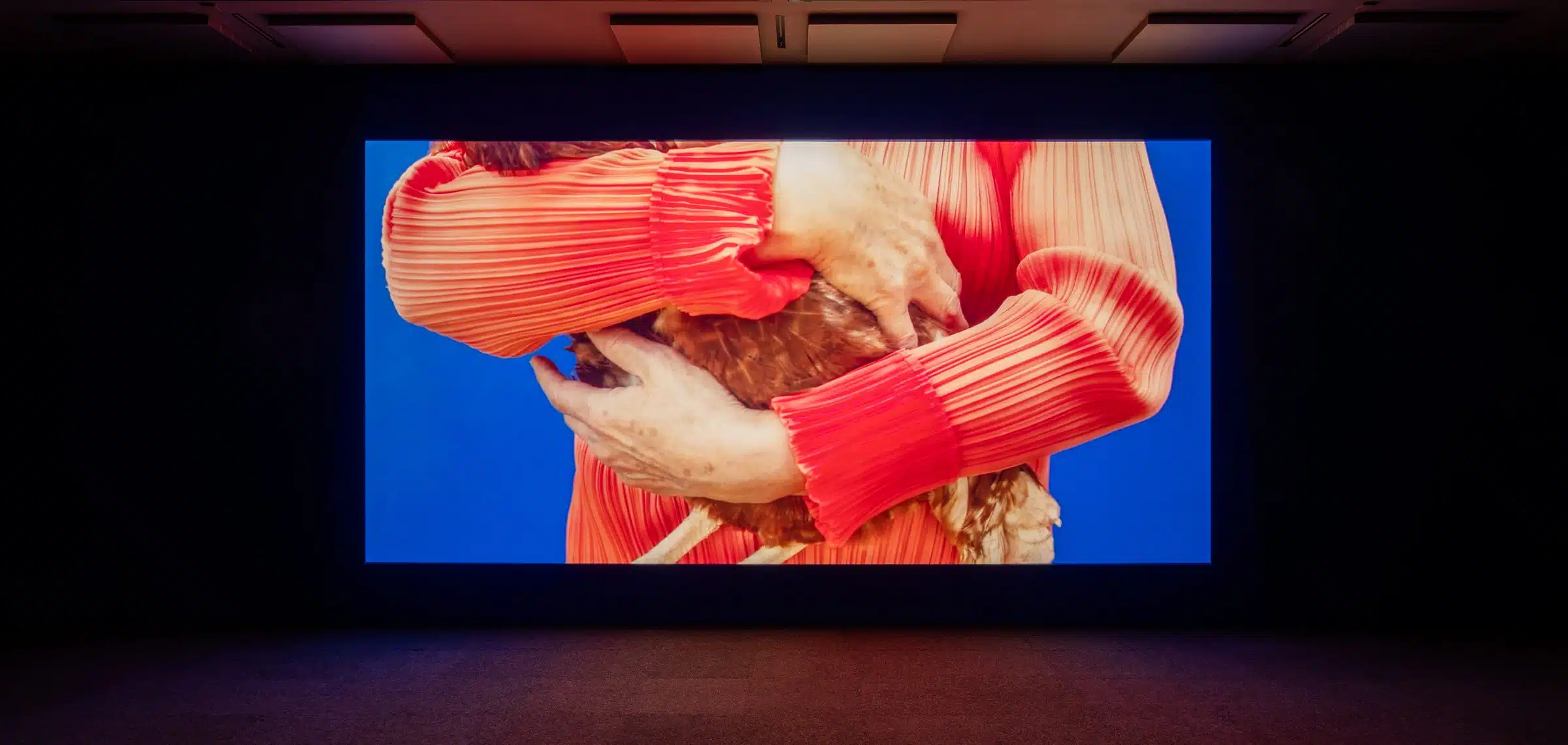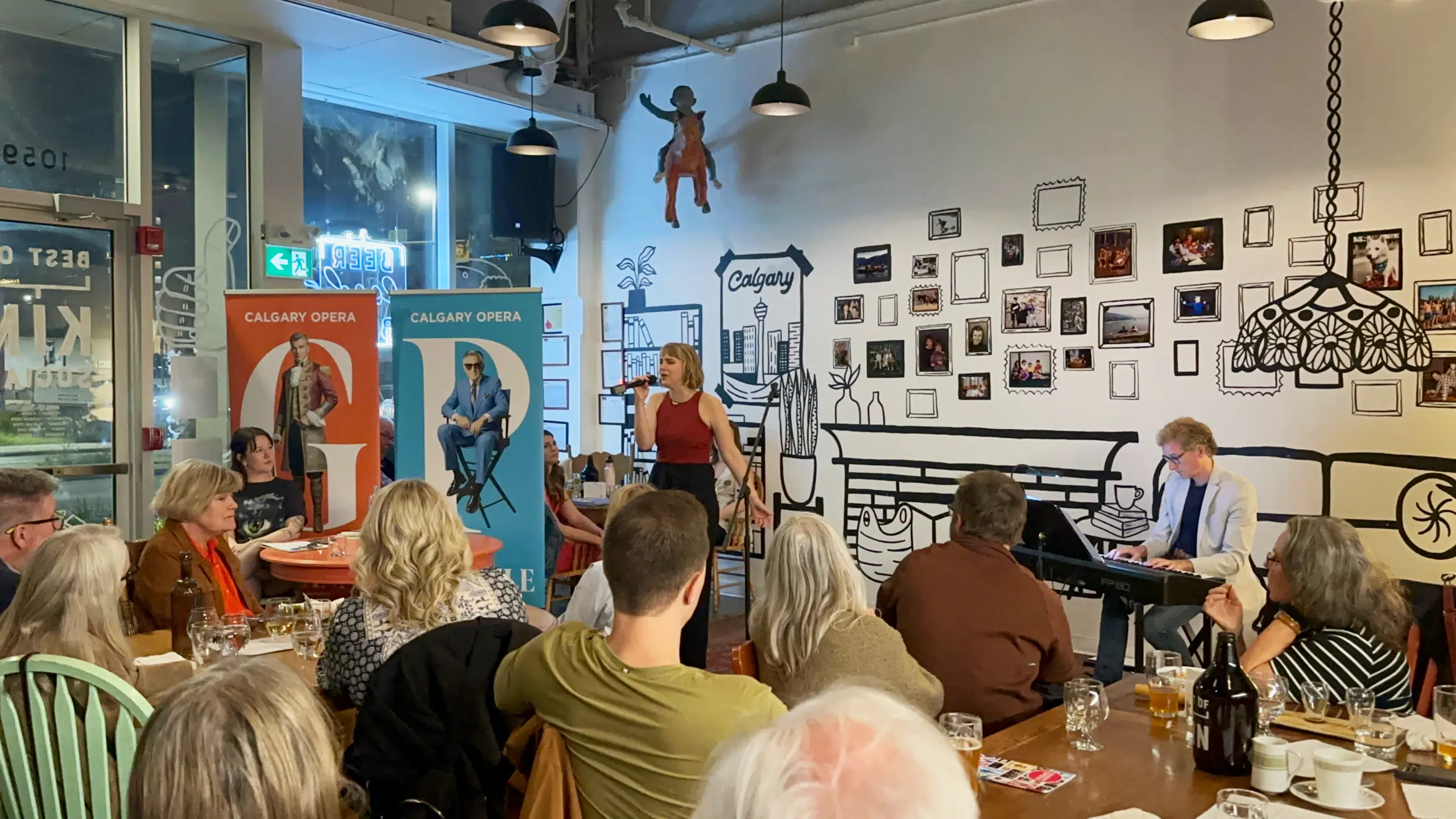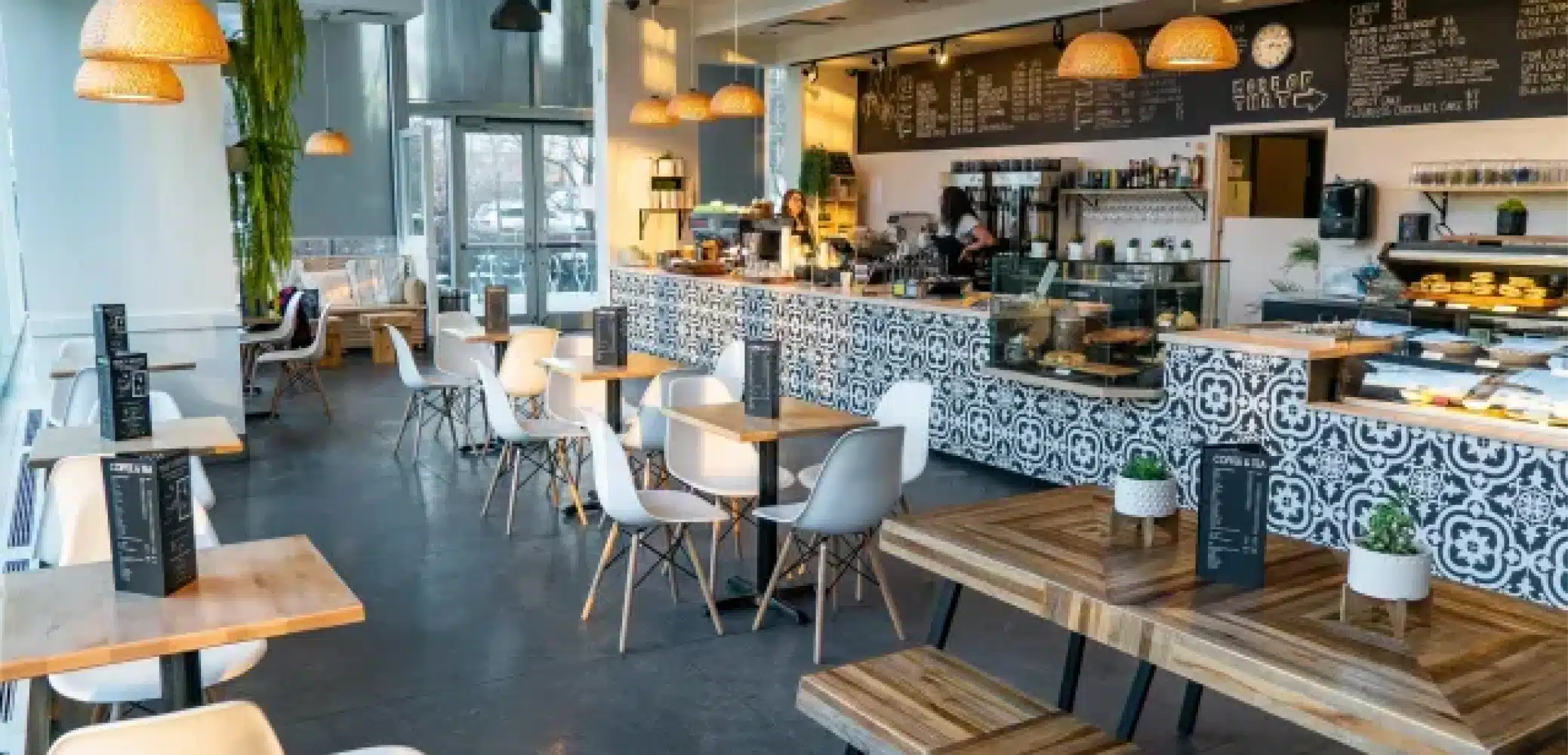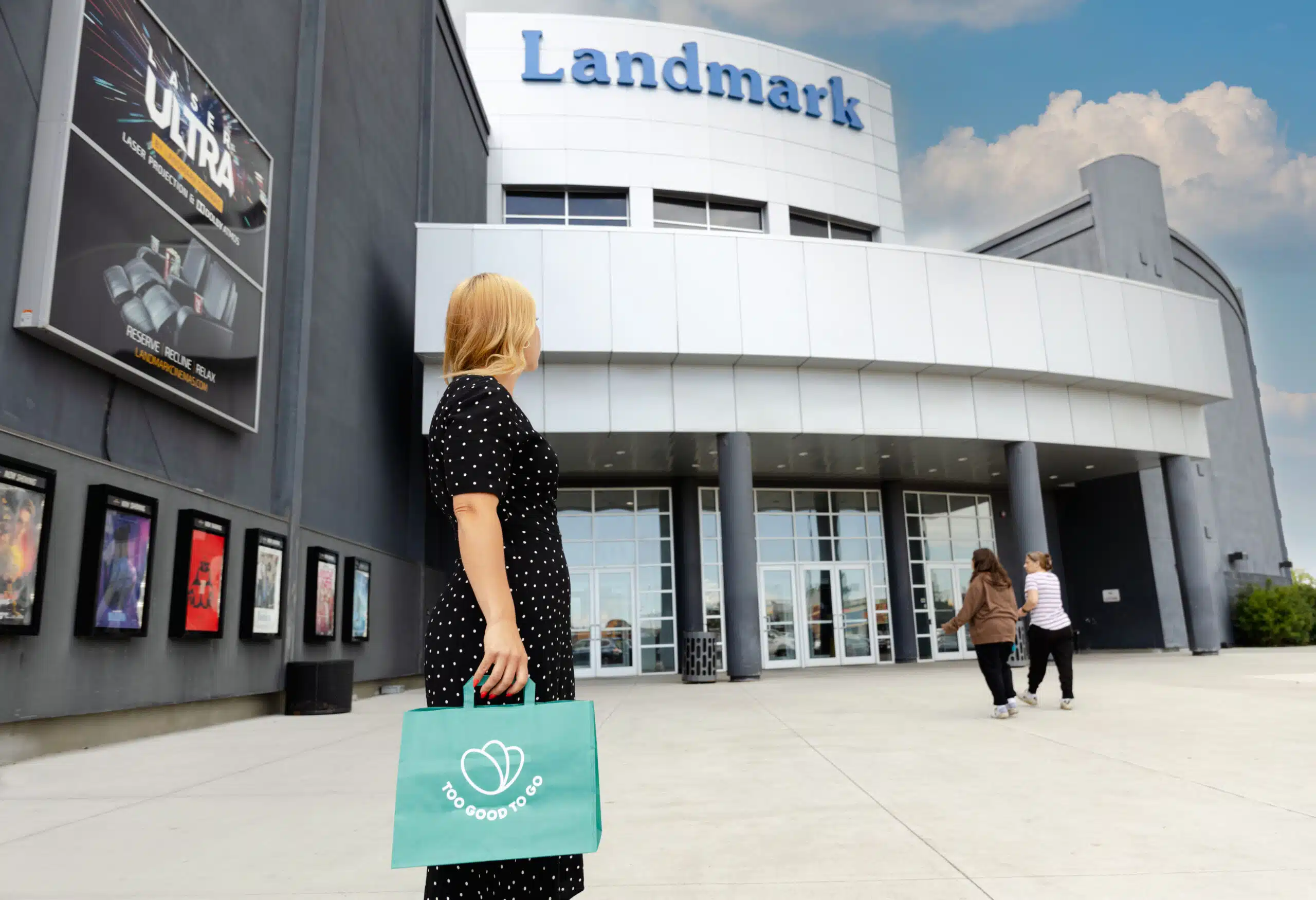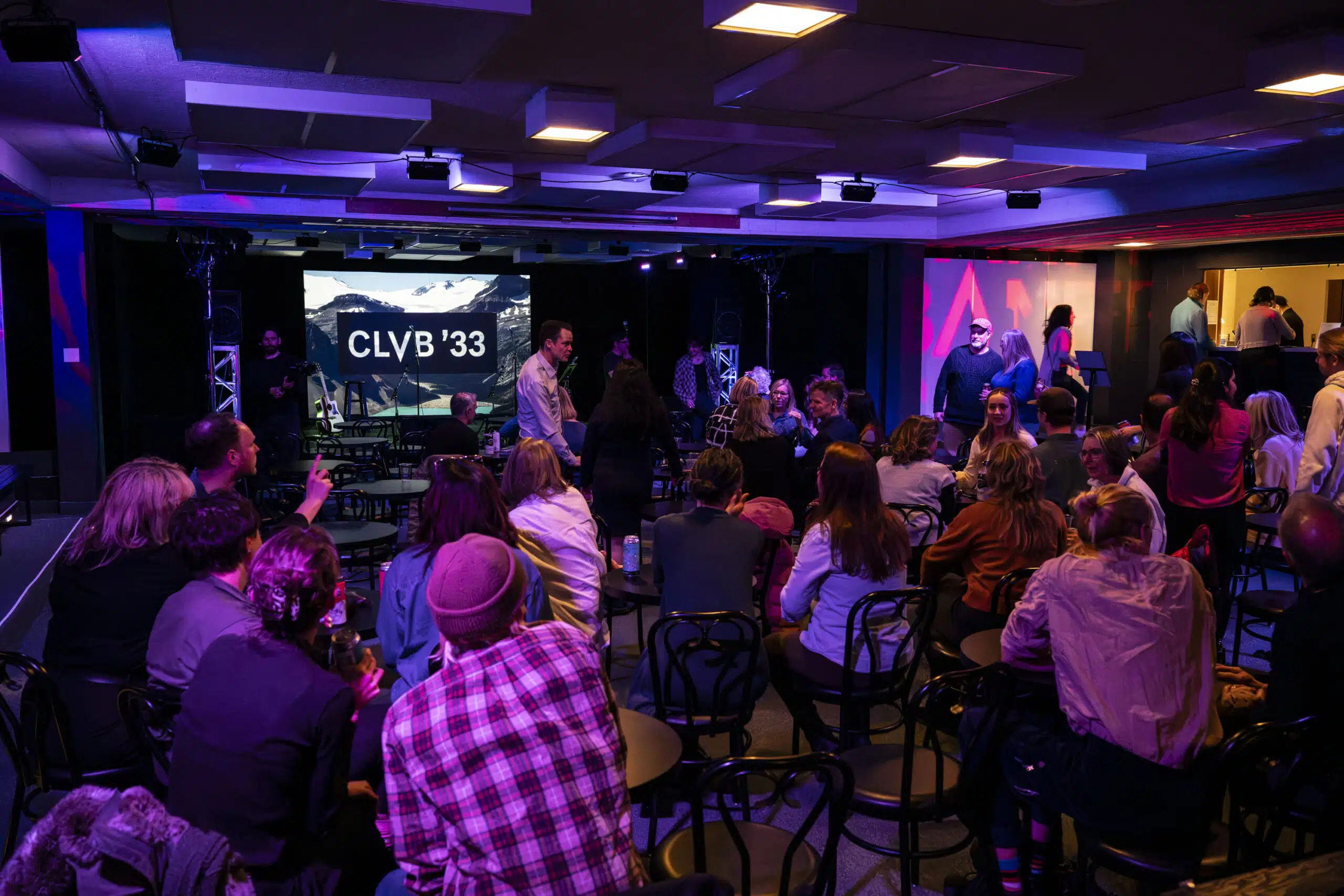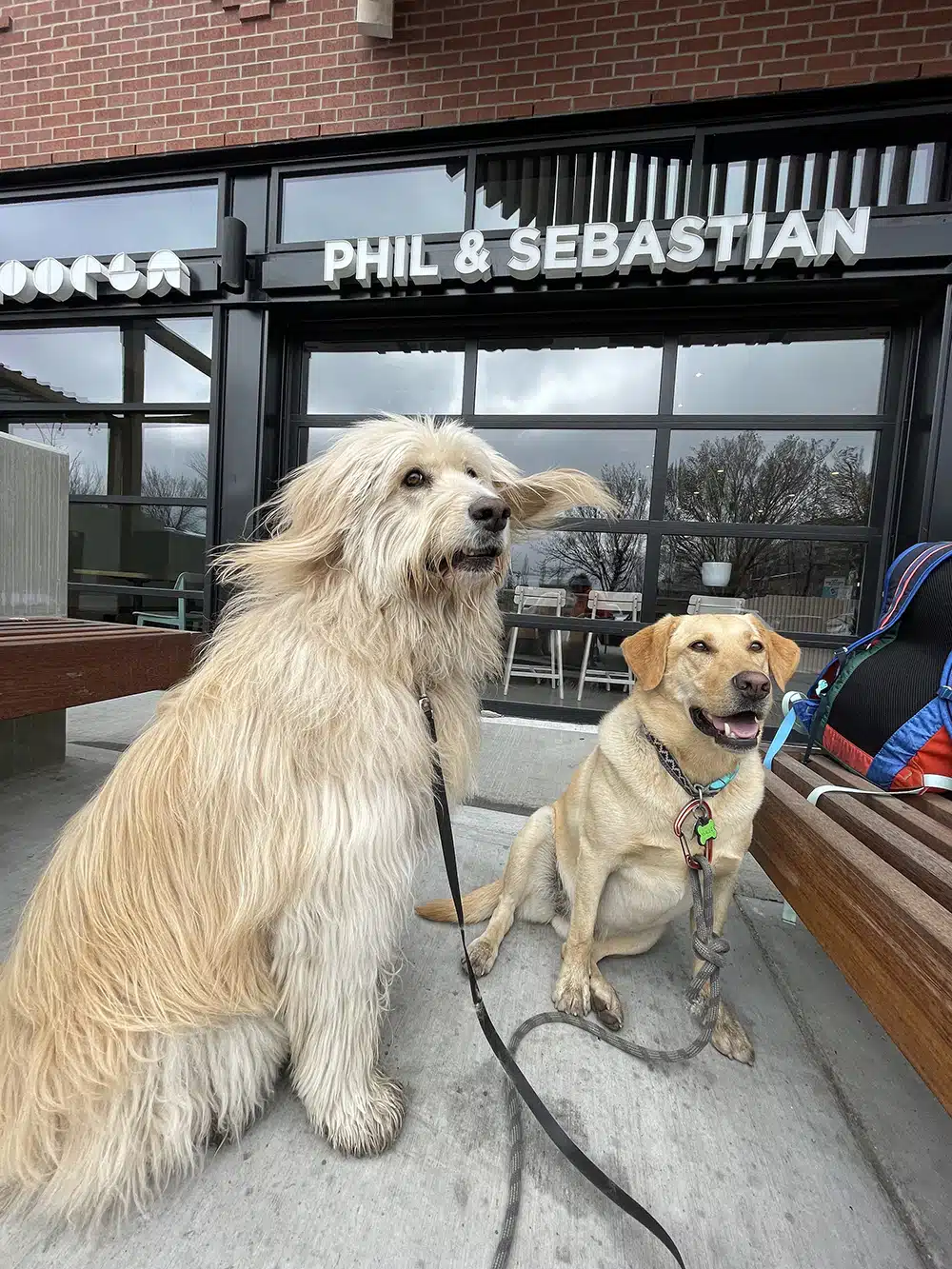Three exhibitions, curated by Elizabeth Diggon, are framed from women’s experience in relation to family, gesture, and process.
The three separate yet synchronous exhibits — showcased at the Esker Foundation — showcase artworks by artists Erika DeFreitas, Hangama Amiri, and Thuy-Han Nguyen-Chi, each with a distinctive display of storytelling based on personal experience.
Esker’s wall texts in the exhibit offer insight into the individual artists’ approaches.
Erika DeFreitas: and that break is the one that shows (to shift, a curve, to quiver)
In her “ongoing search for absences and omissions within the canon of art history,” interdisciplinary artist Erika DeFreitas delves into a search for matrilineal connection and meaning with a number of separate-yet-related series, each employing processes of collage, enlisting photography, texts, writing, textiles, performance and video.
From the introductory exhibit text, we learn that, during a residency in Trinidad and Tobago, DeFreitas “felt inexplicably drawn to the statue of the Black Madonna of La Divina Pastora Church in Siparia.” After returning home, she learned that her paternal grandmother was amongst a community of women who tended to this statue. It was in response to learning of this connection that she created the series, The Black Madonnas of Perpetual Murmurs.
In a separate series of archival-process themed collages, DeFreitas has drawn inspiration from an archeological discovery when a residue of the mineral lapis lazuli was discovered in the dental records of a medieval woman.
The discovery implied that the medieval woman was a scribe, which is a profession where few sources have credited women’s contributions.
Lapis lazuli pigment produces the highly desirable colour ultramarine. During the Italian Renaissance, ultramarine was the only colour deemed worthy to depict the robes of the Virgin Mary.
Prior to the advent of synthetic alternatives, ultramarine was one of the most challenging pigments to acquire and refine. The hard rock was mined almost exclusively in Afghanistan.
Hangama Amiri: PARTING/فراق
Artist Hangama Amiri and her family fled Kabul in 1996 during the Taliban takeover, and this led to a period of familial separation. The family was apart for nine years before they settled together in Halifax in 2005. During their time of separation, the family frequently exchanged letters, photographs and gifts.
Esker shares that “In the present, Amiri mines this archive of family photos, material fragments, and memories, translating them into lushly detailed textile collages.”
Amiri was trained as a painter before she pivoted to textiles. Her mother taught her to sew, and her uncle was a tailor. Esker shares that “through the shared labour of conversations and collective remembering, Amiri’s parents have become crucial collaborators in her work.”
Amiri takes a multi-disciplinary approach to reminiscing for this body of work on display. She starts by making a pencil sketch of the snapshot photograph, then renders it in coloured pencil, and then blends techniques of sewing, screen printing, and appliqué.
The final hand-stitched textile collages were layered moments in the lives of family members when they were apart. She includes herself as the photographer’s shadow in one of the images of a family festivity.
“Amiri’s work celebrates and witnesses the immense labour required to care for a family amidst the trauma of migration and separation and the bonds that connect kin across space and time.”
Thuy-Han Nguyen-Chi: The blue of the sky depends on the darkness of empty space behind it
The 20-minute video artwork, Into The Violet Belly, shares a powerful story narrated by the artist’s mother, Hoa. Hoa recounts the circumstances of her escape from Vietnam following the American War. She leads us from police questioning to a cathartic jump into the sea, simultaneously realizing both death and new life.
The echoing song of a ghostly voice sounds over a visual effect of small spheres dancing into the shape of a whale fall — a dead whale that falls to the sea floor and promotes ecological succession.
Esker offers insight with exhibit text. “Fragments of Hoa’s migration story intermingle with Vietnam’s creation myth as the film drifts between documentary, mythology, and science fiction, blurring the boundaries between each.”
A nest of eggs is piled on a beach, and the camera turns the earth so the viewers might fall off the edge like a cliff before flipping upside down. Han and Hoa reenact Hoa’s jump into the sea, strengthening their bond and Han’s awareness of her mother’s experience.
Esker material prompts that, “Crucially, both narratives remain incomplete – what is withheld is as potent as what is revealed.”
–
Spring Community Night is an opportunity to visit the exhibitions, enjoy a hands-on activity, join a tour, and enjoy snacks and refreshments. Catch Community Night on March 21 from 6 to 8 p.m.
Esker Foundation is located at 1011 9 Ave. S.E. on the fourth floor. Audio and video content about Esker exhibitions and artists can be explored via QR codes found on artwork labels throughout exhibitions or accessed via eskerfoundation.com.
